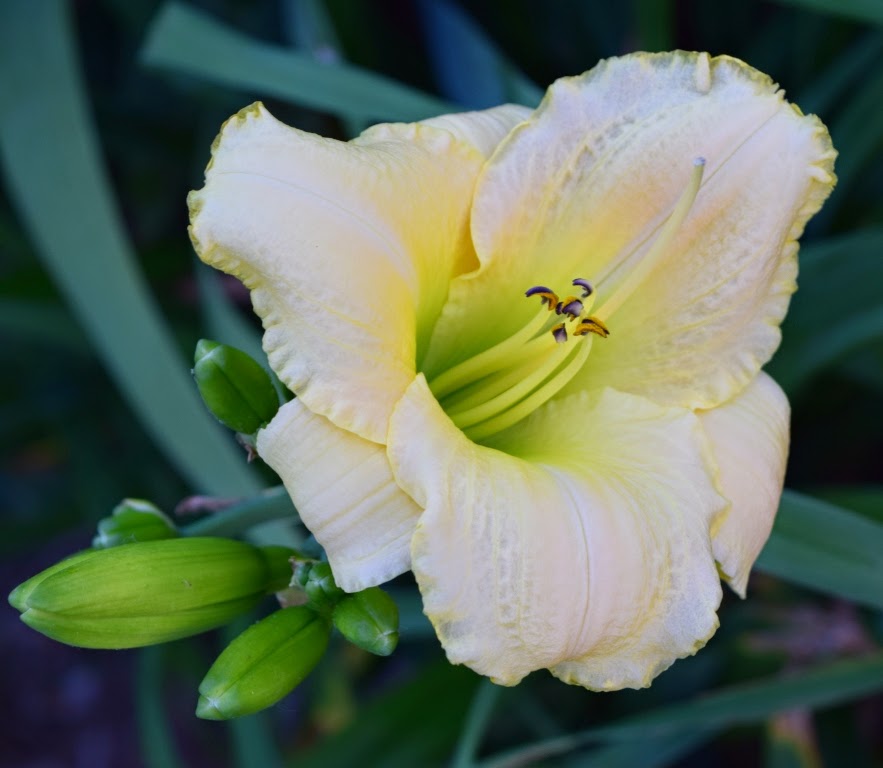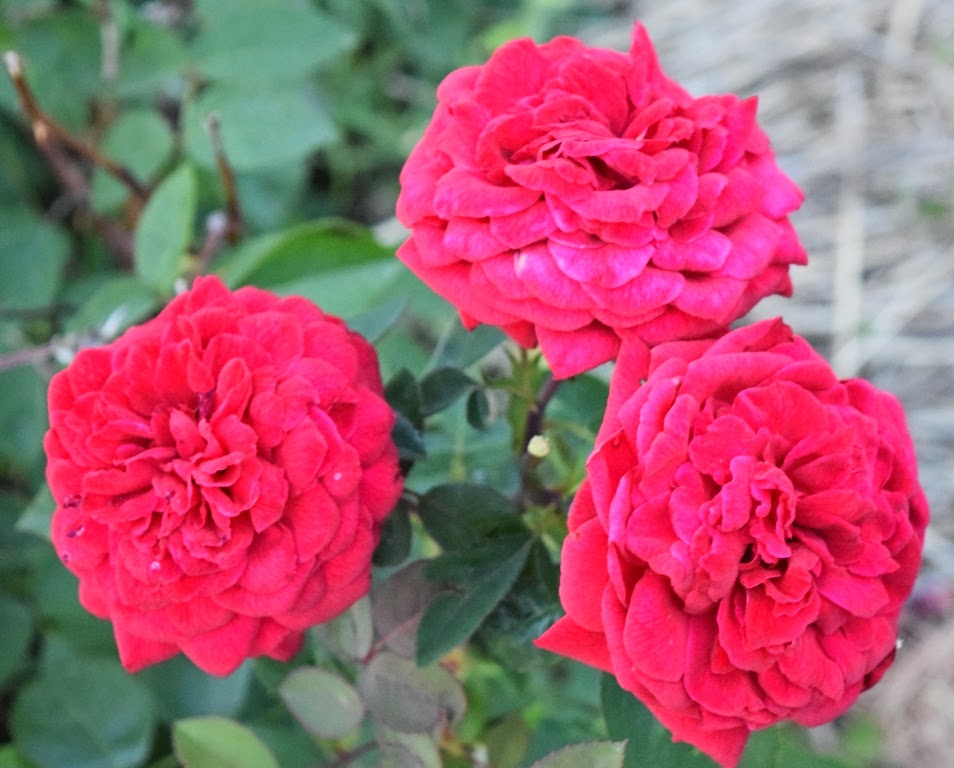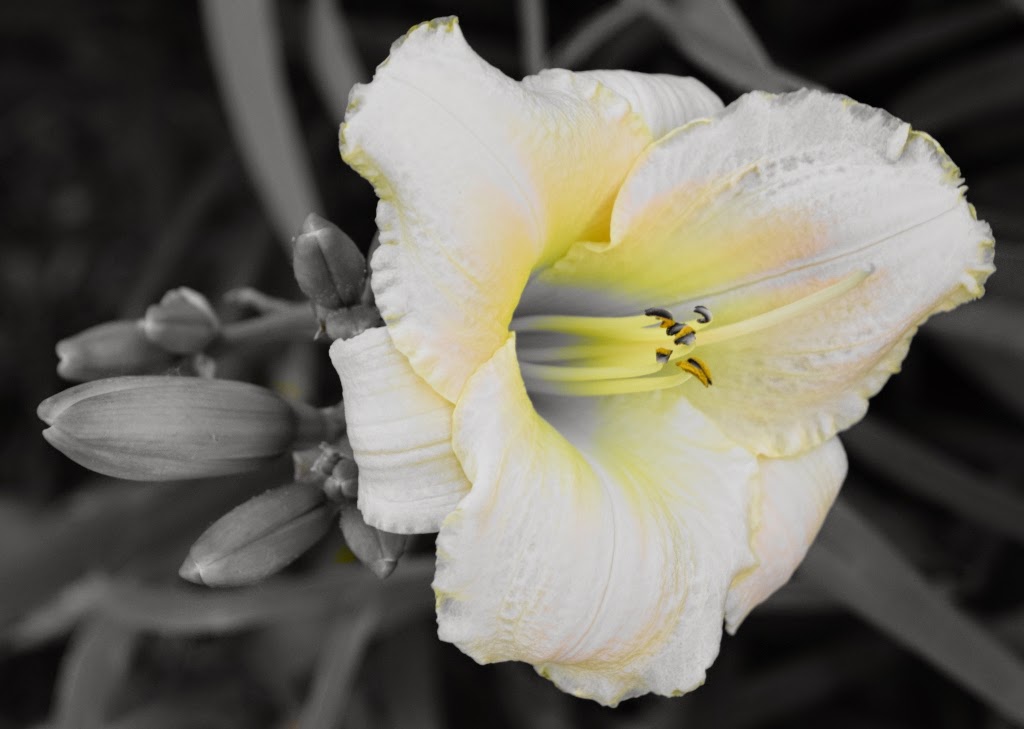 ProfessorRoush has a new camera. Nothing really fancy, but I am setting aside my beat up and almost 10 year old Canon Rebel in favor of modern file sizes rather than files that are no bigger than those on my iPhone 5. The Canon was still okay, as evidenced by the couple of thousand pictures on this blog, but it had some autofocusing problems and was pretty battle-scarred.
ProfessorRoush has a new camera. Nothing really fancy, but I am setting aside my beat up and almost 10 year old Canon Rebel in favor of modern file sizes rather than files that are no bigger than those on my iPhone 5. The Canon was still okay, as evidenced by the couple of thousand pictures on this blog, but it had some autofocusing problems and was pretty battle-scarred.  The new camera is a Nikon D3300...kind of bottom of the line for Nikon DSLR's, but with most of the picture quality of the big boys. In a few brief pictures yesterday, I established that it was working well and focusing better on auto than my Canon and it was going to help improve my photos. But I was in for a big surprise. In selecting cameras, I tend to ignore the bells and whistles of camera special effects because I was trained on film, where the best you could do was manipulate F stops and shutter speed unless you used a filter. These new cameras are entirely another animal.
The new camera is a Nikon D3300...kind of bottom of the line for Nikon DSLR's, but with most of the picture quality of the big boys. In a few brief pictures yesterday, I established that it was working well and focusing better on auto than my Canon and it was going to help improve my photos. But I was in for a big surprise. In selecting cameras, I tend to ignore the bells and whistles of camera special effects because I was trained on film, where the best you could do was manipulate F stops and shutter speed unless you used a filter. These new cameras are entirely another animal. This morning, playing for 20 minutes while I walked the dog, the special effect modes are sucking me into the depths of an exciting new world. Some of them are simple. The picture to the right shows deep red 'Kashmir', taken this morning in low light on automatic exposure. Like all digital cameras I've ever known, this Nikon has a problem with reds, oversaturating them. The picture at the top, however, of deep red 'Kashmir', was taken with the "low-key" effect. Much better for color, don't you think?
This morning, playing for 20 minutes while I walked the dog, the special effect modes are sucking me into the depths of an exciting new world. Some of them are simple. The picture to the right shows deep red 'Kashmir', taken this morning in low light on automatic exposure. Like all digital cameras I've ever known, this Nikon has a problem with reds, oversaturating them. The picture at the top, however, of deep red 'Kashmir', was taken with the "low-key" effect. Much better for color, don't you think? There's another special effect that I already know is going to get ever more use as well; the "selective color" effect. Take the non-descript peach daylily to the left above. If I use the camera to pick out the yellow of the throat and use the selective color effect, I get a pretty boring photo like the one to the left.
There's another special effect that I already know is going to get ever more use as well; the "selective color" effect. Take the non-descript peach daylily to the left above. If I use the camera to pick out the yellow of the throat and use the selective color effect, I get a pretty boring photo like the one to the left. But if I take a photo of a more vivid pink daylily with a yellow throat like the one at the right, and then, keeping the effect on and using the yellow chosen from the first yellow daylily above as a selective color, I get the picture below:
But if I take a photo of a more vivid pink daylily with a yellow throat like the one at the right, and then, keeping the effect on and using the yellow chosen from the first yellow daylily above as a selective color, I get the picture below:Like, Wow!, right? The possibilities for just this one special effect are almost endless and I have a feeling I'm going to be spending a lot of time hunched over with a camera in my garden in the next few days. The pictures above are all just exploratory photos taken within my first half-hour of using this camera, not really worrying about holding the camera still or picking the best bloom or lighting. There's a whole new garden waiting out there. And I'm chomping at the bit to see what the "super vivid" effect can do with a Kansas sunset!

Oh wow. I'm impressed. I bought a Nikon D3100 last year because the price was right (of course it was...the D3200's were out!) and love using it but I don't think it has those special effects features. If it does, I'm too green to have figured it out yet. The last photo of the daylily is awesome!
ReplyDeleteNot a great deal of difference between the three as near as I can tell. Lots of good pictures in both of them!
DeleteEureka, right? Yes my Rebel is old also.....I want to purchase a newer one that I can use my lens with. Probably isn't going to happen.
ReplyDeleteYou are going to have a ball. Do you use Picasa?
I have in the past, but don't now. Primarily just edit with the Windows software because 99% of what I post I just crop and then compress. I try not to change colorations since people google the blog to find so many specific roses.
DeleteI didn't stay with Canon because my lenses were shot anyway...need to replace the whole setup.